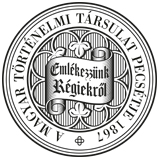Századok – 2015
2015 / 2. szám - Pálosfalvi Tamás: Tettes vagy áldozat? Hunyadi László halála
TETTES VAGY ÁLDOZAT? HUNYADI LÁSZLÓ HALÁLA 441 március 9.: Hunyadi László ismét Esztergomban március 14.: A Hunyadi fivérek és társaik letartóztatása március 14/15. éjjel: Budára érkezik Újlaki Miklós és Rozgonyi Rénold március 15.: újabb letartóztatások március 16.: Hunyadi László lefejezése március 16. után: Hunyadi birtokok szétosztogatása; királyi tanácsi határozat a Szilágyi Mihály szolgálatába állók hűtlenségéről; Újlaki Miklós, királyi főkapitány és szlavón bán, sereg élén Temesvár ellen vonul; Szilágyi Mihály elveszi nővérétől, Erzsébettől a várat, nehogy a királypártiak kezére kerüljön. március 22. előtt: Garai László nádor és Újlaki Miklós látogatása a börtönben ülő Kanizsai Lászlónál és Rozgonyi Sebestyénnél; Vitéz Jánost Szécsi Dénes érsek őrizetére bízzák május: Brankovics Katalin (Ciliéi özvegye) Budán közbenjár Vitéz János érdekében május 24/25.: Kanizsai, Rozgonyi és társaik szökése; V László Bécsbe indul, magával viszi Hunyadi Mátyást és Modrar Pált. CULPRIT OR VICTIM? THE DEATH OF LADISLAUS HUNYADI by Tamás Pálosfalvi (Summary) On 16 March 1457 Ladislaus Hunyadi, elder son of the late governor John Hunyadi, was executed at Buda after a summary trial by king Ladislaus V and the royal council. This event has traditionally been interpreted in Hungarian historiography as a revenge taken by the king, upon the instigation of a baronial party supposedly led by palatine Ladislaus Garai, for the death of count Ulrich of Cilli at the hands of Ladislaus Hunyadi some four months earlier in the castle of Belgrade. The present study examines the way which led to the tragical events of March 1457, by reassessing the political situation in Hungary in 1456-1457, and examining the conflicting interests which made any compromise between the king and the Hunyadi family a practical impossibility. By drawing on sources which have so far remained unknown to or rejected as untrustworthy by the research, the author comes to the conclusion that in March 1457 Ladislaus Hunyadi indeed organised a plot in order to depose Ladislaus V but the real mover in the background was his uncle, Michael Szilágyi. The plot was revealed to the king by Nicholas Újlaki, voevode of Transylvania, who wanted to take the place at the side of the young ruler previously occupied by Ulrich of Cilli. In order to prompt the king to act with determination, Újlaki implicated John, bishop of Várad, and other persons in the close entourage of Ladislaus V in the conspiration. Ladislaus Hunyadi was then executed in order to force Michael Szilágyi to negotiate. After a failed campaign of Újlaki against the castle of Temesvár, where the Hunyadi family kept the money they had amassed from the royal revenues in the course of the previous years, the voevode’s plan collapsed, and the country again sank into civil war after the king had left for Vienna in the late spring of May 1457.
